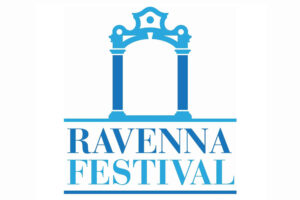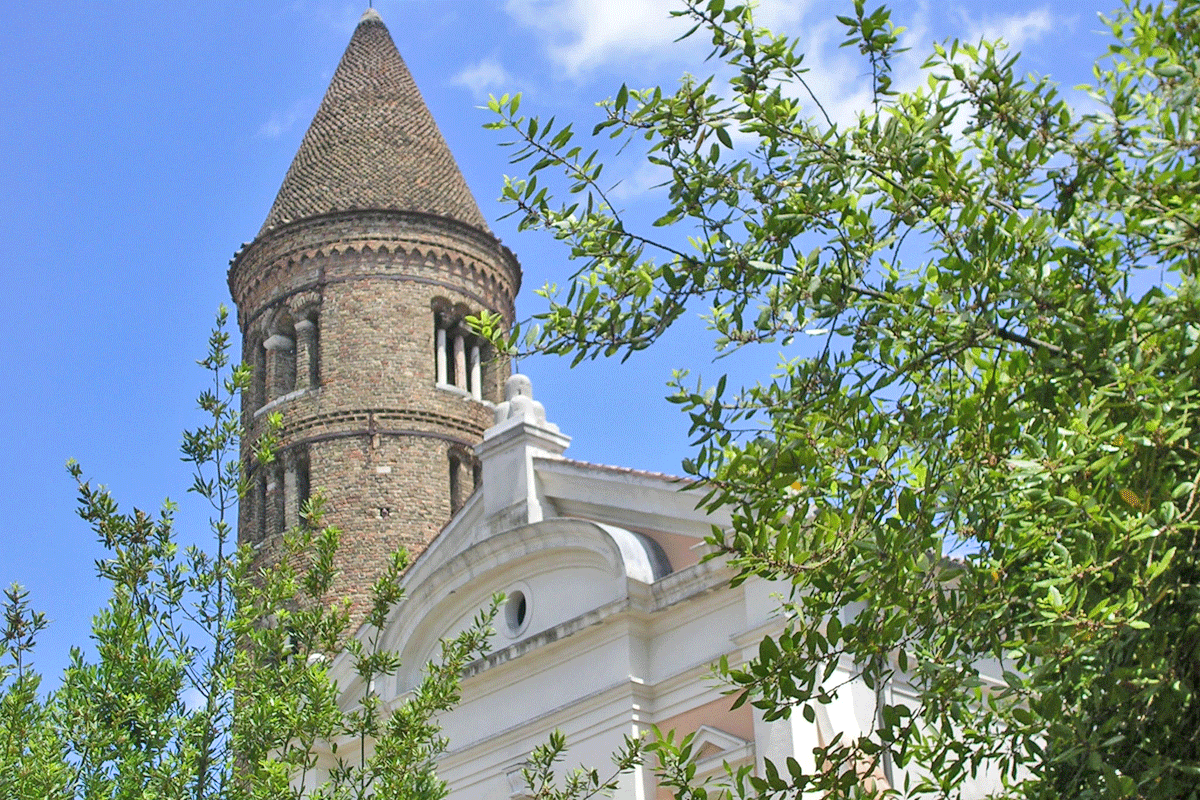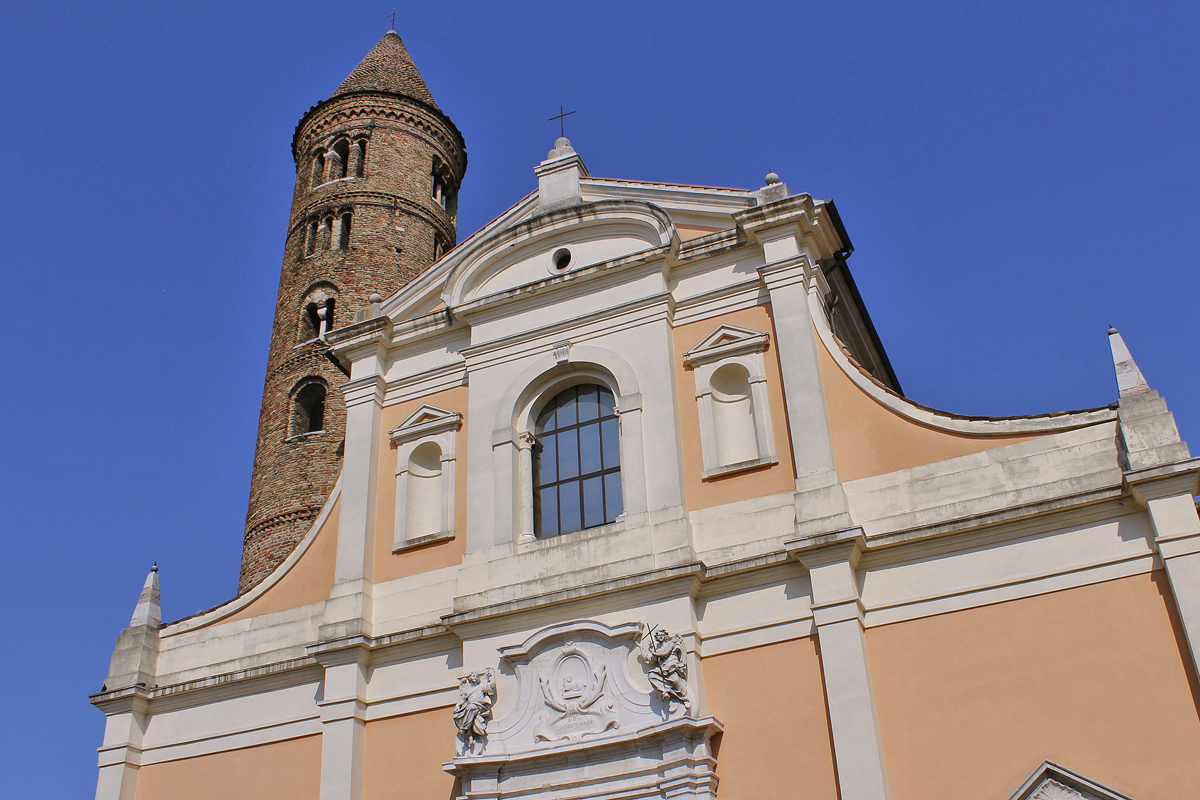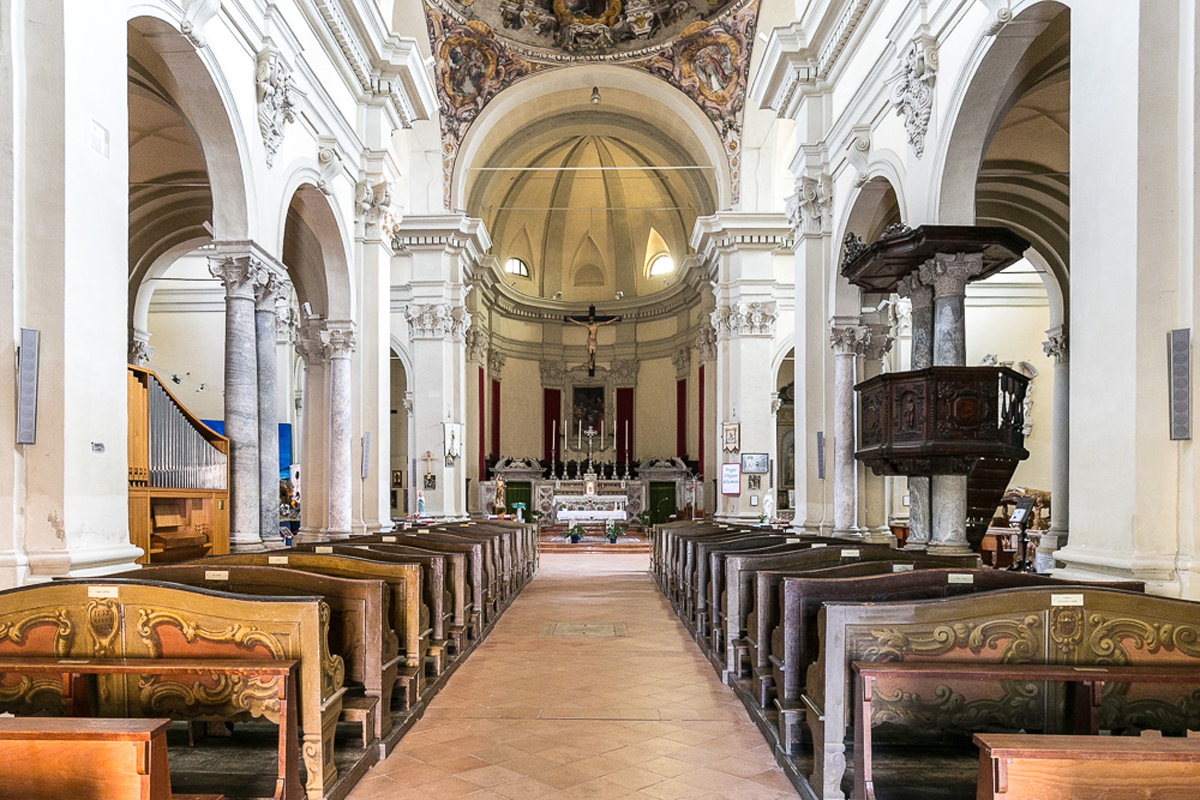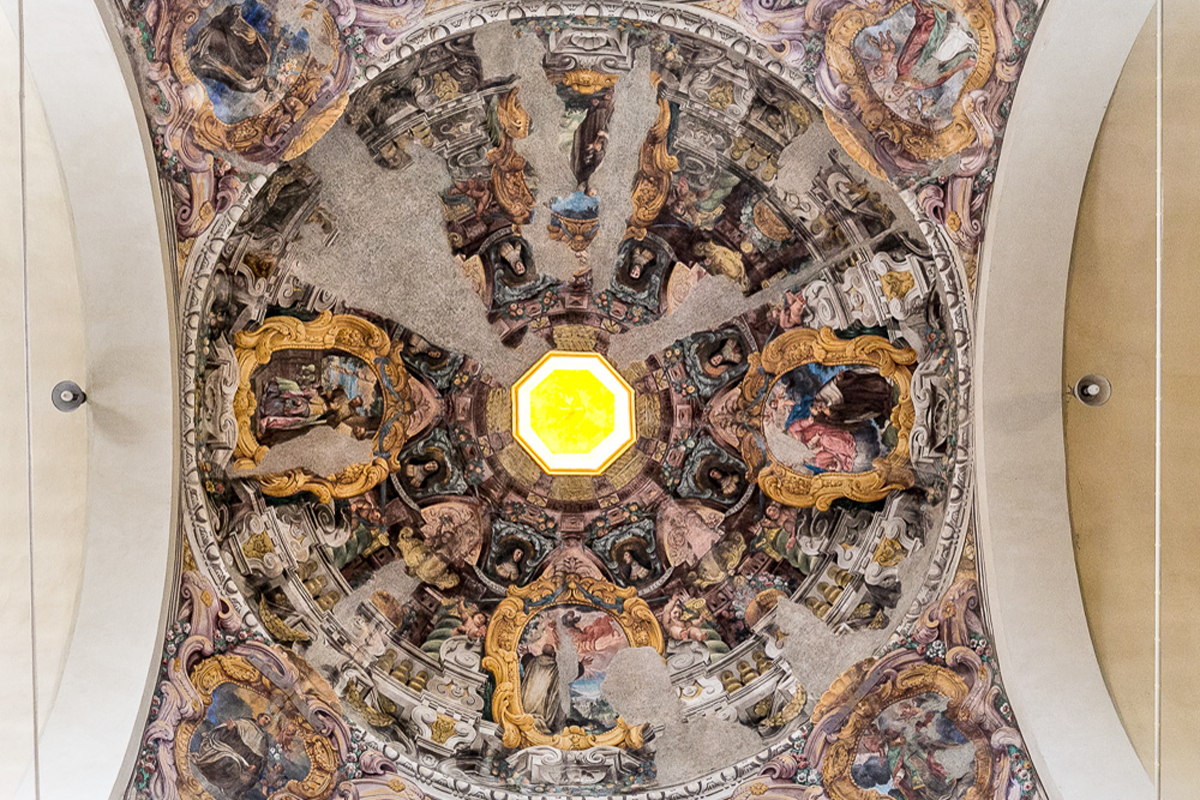Among the many religious buildings located in the historical centre of Ravenna, the CHURCH OF SAN GIOVANNI BATTISTA, with its peculiar brick-built circular bell tower is undoubtedly worth a visit.
To distinguish it from the Basilica of San Giovanni Evangelista, located near the railway station, the locals call it “San Giovanni della Cipolla” (lit. Saint John of the Onion) with regard to the ancient vegetables market hosted in the four-sided portico that no longer exists.
This tradition takes place still today: every June, on the occasion of the day of Saint John, the churchyard of the church hosts a unique fair dedicated to onions.
History of the church
Founded during the 6th century AD by Baduario (at least according to historian Andrea Agnello), the church of San Giovanni Battista seems to correspond with the old San Giovanni ad Naviculam, whose name recalls the presence of a small boat used to cross the Padenna river, which flew in this very part of the city.
The original structure of the church was divided into three naves divided by twenty columns and preceded by a four-sided portico, demolished in 1634. In the 13th century, a monastery was built right next to the church. In the 15th century, it received huge donations for the construction of a large hospital destined to needy people.
In 1688, the building was severely damaged by an earthquake. One year later, it was rebuilt by architect Pietro Grossi according to the aesthetic standards of the time. Many of the current walls were almost completely reconstructed around 1694.
This general intervention did not affect the circular bell tower dating back to the 9th century. It is 42-metres-high and has two orders of large single-lancet windows surmounted by mullioned and three-light windows.
The interior of the church
In addition to the striking contrast between the Baroque façade and the medieval bell tower, the inside of the church is very evocative.
Inside the church, art reigns supreme in every corner: the dome is decorated with frescoes by Francesco Ferrari, while the Spreti chapel features frescoes dating back to the second half of the 14thcentury. In addition to the wall paintings, there are also precious masterpieces by the most important artists from Ravenna active between the 15th and 18th century: Giovanni Battista and Andrea Barbiani, Domenico Cignani and Francesco Longhi.
From this church come the relics of Saints Quirico and Giulitta, now kept in the Archiepiscopal Museum, and several sarcophagi, including the ark of Pier Traversari, now in the Quadrarco of Braccioforte.
Lastly, this church also housed the triptych by Niccolò Rondinelli, now visible in the MAR – Ravenna Art Museum, depicting the Virgin with the Child, Saint Sebastian and Saint Albert, praised by Vasari as the work that “surpassed all his other works”.
The Neapolitan nativity scene displayed inside the basilica is also worthy of a note.


